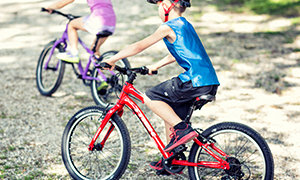BGI TEACH YOUR KIDS TO RIDE
Bicycle Garage Indy Learn-to-Ride Resources
Click HERE for PDF of "Teaching Your Child to Bicycle" This presentation is used in the Parent Clinic on how to teach your child to bicycle. The presentation outlines the steps used to teach youth AND adults how to ride a bike for the first time. Connie Szabo Schmucker is available for consultation via phone or email if you have additional questions at cschmucker@bgindy.com or 317-777-9630. You can request individual one-on-one bike riding lessons (for youth and adults) via the online form on this page: www.bgindy.com/for/streetwise
Teaching Your Child How to Bicycle - Parent Clinic (4/21/21) - recording
Learn-to-Bike Clinic - Parent Clinic (7/28/2020) - recording
Link to Bicycle Colorado's Learn-to-Bike presentation (has trouble-shooting videos)
Link to Local Motion (VT) video on How to Stop and Start Safely
More Tricks/Tips Videos from Local Motion (VT)
Two Secrets to Teaching a Child How to Ride a Bicycle
Learn More About Learn-To-Ride Classes
TEACH YOUR KIDS TO RIDE WITHOUT TRAINING WHEELS IN ONE EASY LESSON
Though it might sound like one of those outrageous infomercial claims on late-night TV, it really is possible to teach your child to ride without training wheels in about an hour — and without you running along behind the bike. All it takes is a willing child, a little patience, and a positive attitude. Here’s how it’s done.
PREPARATION
Start by scouting out the right location. Look for a park or field with a gentle grassy slope (not steep!) about 50 yards long that doesn’t have any significant obstacles such as bumps, rocks, or trees. It should be relatively smooth and soft, and the grass shouldn’t be too tall.
Before heading to the park, remove the training wheels from the bike and lower the seat so that your child can sit on it and rest both feet on the ground. We recommend that your child wears long pants and sleeves, or knee and elbow pads. Bring a professionally fit helmet and a pair of full-finger gloves, too. The more injury-proof your child feels, the more willing he or she will be to participate in this teaching session. Keep it exciting and fun for your child and remember: NO PRESSURE.
ONE SKILL AT A TIME
The goal of teaching kids to ride is to help them learn the required skills of balancing, steering, pedaling and braking. This is a lot to throw at them at once, which is why so many parents wear themselves out running behind the bike while their children struggle with all these new skills.
The secret is to help them master one riding skill at a time. Your child must be comfortable with each new skill before you show them the next. They’ll learn much faster. And you can simply stand in one spot praising and encouraging your student.
Before starting, have your child put on the helmet and gloves. This way, they’ll feel safe, which is important because if they’re afraid, they won’t want to try.
BALANCING & STEERING
The first thing to teach is balancing. Walk up the grassy slope about half way, point the bike downhill and have your child get on and coast very slowly down the hill using their feet as outriggers, dragging them for balance and to slow down. The lowered seat makes it easy for them to reach the ground and maintain their balance. The soft grass will keep their speed down and make the bike come to a stop at the bottom of the slope.
Have your child repeat this step several times, coaching them to lift their feet off the ground a bit to get a feel for how steering affects handling. They’ll learn quickly because they can drag their feet anytime they want so they won’t feel out of control.
Stick with this skill until they’re confident balancing and steering and they can make it down the hill with their feet up. Make a big deal out their progress so they recognize how great they’re doing.
PEDALING
Once your child is confident enough to coast down the hill with their feet off the ground, they’re ready to coast down with their feet on the pedals. Have them rest their feet on the pedals while you hold the bike in place, first.
Then, they’re ready to coast down the slope with their feet on the pedals. Be sure to remind them to put their feet on the ground as the bike slows down and stops so they don't fall over. After a few runs down the hill, they’ll get the hang of it.
When they're comfortable coasting with their feet on the pedals, have them practice pedaling the bike as they go down the slope. After a few runs, they’ll probably be able to go further up the slope for a longer ride and more extended practice.
BRAKING
Most bikes for kids have coaster brakes, which are also called “foot brakes,” because they’re applied by backpedaling. Show your child how this works and let them practice slowing, coming to a stop, and putting a foot down.
When they’ve mastered the basic balancing/steering, pedaling and braking skills, you may want to have them take three more trips down the hill, one for each skill, as a refresher. Then, they should be ready to bicycle home and you can mothball the training wheels for good!
Every child is unique and how fast yours learns depends on their coordination level and personality. But, this approach to teaching bicycling without training wheels has worked well for our families and we know it can work for you, too. If you have any questions, feel free to come in and ask and we’ll be glad to help you out. And please, for their safety (and because it's a law in many states), teach your children to always wear their helmets when bicycling.



